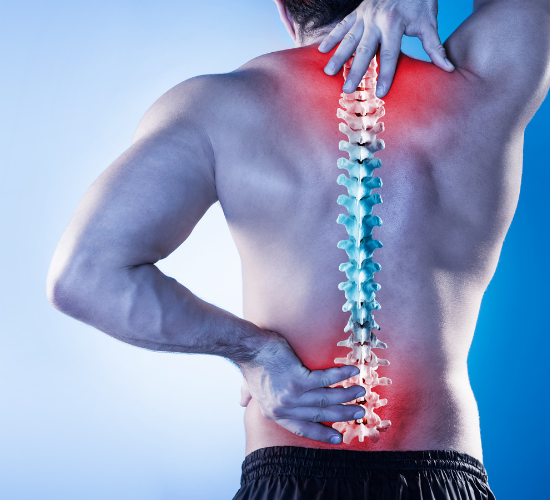A bulging disc, often mistaken for a herniated disc, is a common condition that can cause considerable pain and discomfort, especially when it occurs in the lumbar region (lower back). By delving into its causes, symptoms, and the benefits of exercises, you’ll gain a better understanding of this ailment and how to manage it.
What is a Bulging Disc?
The spine is composed of a series of bones called vertebrae. In between these vertebrae are intervertebral discs that act as shock absorbers, preventing the bones from rubbing against each other. These discs have a tough outer layer and a soft, gel-like inner core.
A bulging disc occurs when the disc expands beyond its usual space, typically without breaking open. This can put pressure on nearby nerves, leading to pain and other symptoms.
Causes of Bulging Discs in the Lower Back
- Aging: As we age, the water content in our discs reduces, making them less flexible and more prone to bulge.
- Wear and Tear: Repeated stress over the years, due to posture or activities, can lead to a bulging disc.
- Injury: A traumatic event or heavy lifting can cause sudden pressure on the disc, leading to a bulge.
- Genetics: Some people may be genetically predisposed to develop spine-related issues.
Symptoms of a Bulging Disc in the Lower Back
- Localized Pain: Pain at the site of the bulging disc.
- Radiating Pain: Pain that travels down the legs, commonly referred to as sciatica.
- Tingling or Numbness: Often felt in the buttocks, legs, or feet.
- Muscle Weakness: Reduced strength in the muscles served by the affected nerve.
- Loss of Reflexes: Particularly in severe cases.
However, it’s worth noting that not all bulging discs cause symptoms. They can sometimes be discovered incidentally during spinal imaging for another condition.
Exercises for Bulging Disc in the Lower Back
Physical therapy and exercises can play a pivotal role in managing and even reducing the symptoms of a bulging disc. Exercises can help by:
- Strengthening the Back and Core: A strong back and core offer better support to the spine, reducing the strain on the discs.
- Improving Flexibility: Stretching can reduce tension and maintain a healthy range of motion.
- Promoting Blood Flow: Improved circulation can aid in the healing process.
If you’re searching for targeted exercises to manage the pain and discomfort associated with a bulging disc in the lower back, consider visiting Mainstay Medical. They offer a comprehensive guide on exercises for bulging disc in lower back tailored for this specific condition.
Preventing Bulging Discs
Prevention is always better than cure. Here are some measures you can adopt to reduce the risk of developing a bulging disc:
- Maintain a Healthy Weight: Excess weight puts additional strain on the spine.
- Practice Good Posture: Always stand and sit with a straight back and avoid slouching.
- Lift Properly: Use your legs to lift heavy objects, keeping the object close to your body, and never twist your spine while lifting.
- Stay Active: Regular exercise helps maintain a healthy spine.
Conclusion
While a bulging disc in the lower back can be a source of significant discomfort, understanding the condition and adopting the right exercises can provide relief. Proactive measures, combined with a healthy lifestyle, can go a long way in managing and preventing further complications. Remember to always consult with a healthcare professional before embarking on any exercise regimen, especially when dealing with spinal conditions.













































